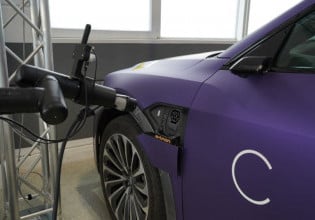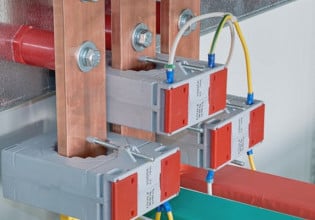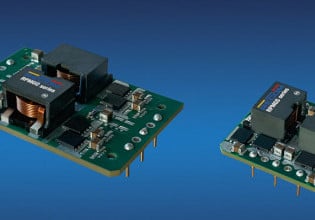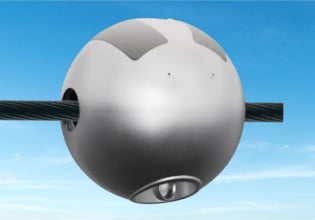Electrical Grounding Using the Ground-Fault Neutralizer (Petersen Coil) Method
Learn about the ground-fault neutralizer method of system grounding, its main characteristics, advantages, disadvantages, and areas of application.
The main advantage of using the ungrounded method in industrial plants and utility systems is the opportunity it provides for keeping the entire network in service until removing the fault during a shut-down for maintenance or temporary failures.
However, the technique has disadvantages, including overvoltage and ferroresonance. These difficulties can be offset by connecting the system neutral to ground through a high-impedance iron-cored reactor, known as a ground-fault neutralizer or Petersen coil, keeping the benefit of continuity of supply with improved performance.
What is a Petersen Coil?
A ground-fault neutralizer, or Petersen coil, is a high-impedance iron-cored reactor used in three-phase networks to lessen single line-to-ground fault current, lower the number of circuit breaker operations, and improve service continuity.
It was invented in 1916 by Professor Waldemar Petersen, from Darmstadt, Germany, as a result of his research on ground-fault phenomena. To support this solution to the problem of power outages, he presented an outstanding analysis of the fundamental facts, with a comprehensive and reasoned theoretical exposition of his invention.
Although Petersen patented his invention as "Limitation or Suppression of Earth Fault Currents, e.g., Petersen Coil," there is some lack of consistent and adequate terminology to name this method. Some terms overemphasize the action that occurs during ground faults caused by flashovers in the air. Other expressions indicate that the device consists of a coil, entailing its design as a single-phase reactor. The widely used term "arc-suppression coil" is not entirely satisfactory for both reasons mentioned above. Also used are the words "tuned-grounded" and "resonant-grounded" due to the conditions that we'll see in subsequent sections.
The American term "ground-fault neutralizer" covers the function of the device during sustained ground faults, as well as the relief provided in the case of breakdowns in systems with heavy charging currents.
In a power system, the capacitive fault current returns to the system through the fault. Likewise, any added component of the fault current coming from other admittances between system and ground will return through the fault. The resultant fault current will be the superposition of the various components. If two fault currents of equal magnitude and opposite sign merge at the fault, they neutralize each other.
An essential feature of Petersen's invention is that it adds an inductive current of appropriate magnitude to neutralize the capacitive fault current.
The neutralizing current may come from any source as long as the correct amount passes through the fault. A first approach may be connecting a three-phase reactor in parallel with the capacitance to ground of each conductor (Figure 1).
Figure 1. Three-phase ground-fault neutralizer
When there is a ground-fault in one phase, the rated-frequency capacitance current flowing between the unfaulted phases and earth (the charging current), will be substantially equal to the rated frequency current flowing in the grounding reactors. These components will be 180° out of phase at the fault location, and the neutralizing effect is apparent.
The voltage of the neutral raised to the phase-to-neutral voltage of the faulty conductor and line-to-line voltage appears throughout the system between the ground and the two unfaulted lines (73% increase).
The current through the capacitance is:
Ic = Vph ∙ ω ∙ C
and the current through the reactor is:
Ir = Vph/ω ∙ L
where:
- Vph = rms phasor voltage
- ω = radian frequency
- C = capacitance
- L = inductance
By satisfying the condition ω ∙ L = 1/ω ∙ C, we can confirm that the currents through the capacitances and the reactor neutralize each other.
The three-phase method is theoretically correct, but it is not economically justified. The reactor connected to the faulted phase is not active and reduces the working capacity to two-thirds (or less) of the total installed capacity. The currents through the two operating reactors are 60° out of phase, and the resultant current is 1.73 times the current through a single reactor (I0L).
The arrangement exhibited in Figure 1 is not a practical proposition, but it is instructive to compare this basic form of phase grounding with the superior application of the same principle with the reactor connected to a neutral, as shown in Figure 2. Petersen gave both solutions in his original German patent.
Figure 2. Capacitive and inductive currents
The reactor’s connection is to the neutrals of generators, distribution transformers, or zig-zag grounding transformers.
The interaction between system conductors and ground is equivalently represented by the three capacitances to ground transferred to the neutral of the source. The grounding inductive reactance connected to the neutral, either directly or through a grounding transformer, will appear in parallel to the transferred capacitances.
In this case, the total capacitive reactance to ground is:
1/Σ ω ∙ Cn
where n = 1, 2, and 3 for a three-phase system.
An inductive reactance fulfilling the condition
ω ∙ L = 1/ Σ ω ∙ Cn
will cancel such capacitive reactance. This expression is Petersen's rule for tuning the grounding reactors with the system capacitance and agrees with the condition for a circuit to enter resonance.
The system can be 100% tuned or off-tuned. When off-tuned, it can be under- or over-compensated, depending on the balance between capacitance and inductance.
Figure 2 shows the magnitudes of the capacitive and inductive currents flowing during a single line-to-ground fault. The numbers shown are in per unit (pu), with a pre-fault current of 1 pu through the natural capacitances to ground. From Kirchhoff’s current law, Ib + Ic + 3I0L = 0 at the neutral.
Figure 3 shows the resultant phasor diagram.
Figure 3. Voltages and currents under single line-to-ground fault in phase a
Studying System Behavior with the Method of Symmetrical Components
Let's analyze the effect of the ground fault neutralizer located in the neutral, employing symmetrical components.
Figure 4 shows the series connection of positive, negative, and zero sequence networks under a single phase-to-ground fault in phase a.
Figure 4. Connection of the sequence networks for a single line-to-ground fault on phase a
The values of X1c, X2c, and Xₒc, i.e., the distributed capacitive reactances, are substantial in comparison to the series impedance values of Z1s, Z2s, ZTx, Z1line, Z2line, and Zₒline. Then, Z1s and ZTx short-circuit X1c in the positive-sequence network, and Z2s and ZTx short-circuit X2c in the negative sequence network. Also, the sum of the source, transformer, and line series impedances approaches zero compared to the parallel of Xₒc and 3Xւ.
To calculate the fault current, in phase a, the zero-sequence network will do.
Figure 5 shows the connection of the sequence networks in a slightly different manner, highlighting the current distribution in the reactor, transformer, and capacitance. This analysis neglects the resistance of the transformer impedance.
Figure 5. Current distribution in the zero-sequence network
Observe that the current through the reactor in Figure 5 is only one times the inductive component of the zero-sequence network, while in Figure 2 it was three times. This circumstance should not cause confusion since it is only an algebraic artifice where the number three goes from current to inductance, but their product, the voltage, remains the same. The critical concept to keep in mind is that reactance in the neutral has a practical value of three times its real value.
To calculate an approximate real value of the required neutral reactance (in the system's healthy state), we use the equation:
Xt + 3Xւ = Xₒc
and get:
Xւ = 1/3(Xₒc – Xt)
From what we have in Figure 5:
Zₒ = j(Xt + 3Xւ) ∙ (-j Xₒc) / (j Xt + 3jXւ - j Xₒc)
But at resonance:
ƖXt + 3XւƖ = ƖXₒcƖ
then:
Zₒ = j(Xt + 3Xւ) ∙ (-j Xₒc) / 0 = ꝏ
This acts like an open circuit.
When a single line-to-ground fault takes place in phase a, and Zₒ = ꝏ, the zero-sequence voltage at fault will be the pre-fault line-to-neutral voltage of phase a. This voltage will allow capacitive and inductive currents to flow in the zero-sequence loop, although no current will flow in the positive- and negative-sequence networks.
The return path through the fault carries only a small residual current due to the power loss components (including insulator leakage current losses and corona losses), harmonics, and imperfect tuning. The power loss component will be in phase with the voltage; the voltage and current will pass through zero simultaneously, and will quench the arc to the ground without restriking.
A useful facet of the residual current is that it helps to locate permanent faults.
Additionally, after quenching the arc, the resonant condition will keep the magnitude of the voltage across it very close to the zero-sequence voltage. This low voltage condition will complement the small residual current in extinguishing the arc and preventing a restrike. In a compensated system, the voltage recovery time is much slower than in ungrounded networks.
The ground-fault current could be about 3-10% of that of an ungrounded system. In contrast, the magnitude of the circulating current in the loop formed by the reactor and the natural capacitance to ground may be significant.
Usually, the natural capacitance to the ground in non-transposed lines or lines with many single-phase taps is not evenly balanced (non-symmetrical configuration). Both situations are an everyday occurrence in distribution systems. Under these conditions, the load currents may engender small zero-sequence voltages. A zero-sequence voltage may act as a source between the neutral and ground, and create a series-resonant circuit with Xւ and Xₒc.
At resonance, the voltages across the capacitance and the grounding reactor are equal in magnitude but opposite in phase. If the circuit resistance is low, these voltages can become very large, more significant than the applied zero-sequence voltage. For this reason, all the networks will require line-to-line insulation.
Previous installations used a fixed value reactor, and the tuning condition changed depending on the system arrangement. Taps installed in newer reactors allow for manual or automatic tuning. Other devices, like a plunger with a control system, offer secure means for tuning the system.
An Example
A 13.8kV distribution grid has a total charging capacitance to ground (calculated with tables) of 0.658 microfarad/phase. For a rated-frequency of 60Hz and neglecting the transformer impedance, calculate:
- Zero-sequence capacitive reactance per phase (X0c)
- Capacitive charging current per phase (I0c)
- The real value of reactance to be connected to the neutral (XL)
- Current through the inductive component of the zero-sequence network, under single line-to-ground fault (I0L)
- Rated-frequency current at fault (If)
- Current through the actual reactor (3I0L)
Answer:
- -jX0c = -j/120∙π∙C = -j10⁶/120∙π∙0.658 = -j4 031.40 Ω/phase
- jI0c = jVLL/√3∙X0c = j13 800/√3∙4 031.40 = j1.976 A/phase
- jXւ = 1/3(Xₒc – Xt) = j Xₒc/3 = j4 031.40/3 = j1 343.80 Ω
- -jI0L = -jVLL/3∙√3∙XL = -j13 800/3∙√3∙1 343.8 = -j1.976 A/phase
- If = jI0c + (-jI0L) = j(I0c-I0L) = j(1.976 – 1.976) = 0 A
- 3I0L = 3∙1.976 = 5.928 ~ 6 A or VLL/√3∙XL = 13 800/√3∙1 343.80 = 5.928 ~ 6 A
Favorable Performance Traits and Drawbacks
The ground fault neutralizer is useful in systems with frequent single line-to-ground faults in air, as is the case in overhead transmission lines. Most of these faults are transient. The users of this method claim that the outage rates are low, boosting the power grid quality. The neutralizer holds the arc current below the level of self-extinction, clearing the transient fault and deionizing the arc path, without disconnecting the faulted line.
However, residual currents in the fault still pose a risk to people and equipment, including the start of fires. Some countries use the insulated cable in medium voltage networks. Therefore, the uncompensated residual current grows substantially, increasing the risks.
For sustained faults, utilities use ground-fault neutralizers together with a tripping scheme. A typical protective system includes a single-pole bypass circuit breaker that will short-circuit the reactor after a set time if the fault has not cleared. The closing of the bypass circuit breaker will solidly ground the neutral, allowing the standard grounding relays to pick up and selectively clear the fault. The delay time sets the thermal rating of the reactor.
Another method is to assemble a resistor and a single-phase power breaker in parallel with the reactor or with an auxiliary winding. The reactor will limit the fault current and transient overvoltage to safe values the instant the fault occurs. For a permanent fault, the power circuit breaker will close after a preset time, and the resistance will allow enough ground-fault current for relays to pick-up and sound an alarm or trip the breaker of the faulted feeder.
Many countries have regulations setting the maximum allowed preset time, to protect people and property.
A significant weakness of the traditional ground-fault neutralizer is its inability to extinguish failures in solid insulation, such as paper, varnished cambric, and rubber. With the ground-fault neutralizer, cable faults may restrike and produce a short circuit with enough fault current to trip the breaker of the faulted feeder.
Other disadvantages of a ground fault neutralizer include:
- All systems must have insulation for line-to-line voltage.
- The re-tuning of the reactor is necessary to cope with changes in system configuration.
Application Areas for Ground-fault Neutralizers
The ground-fault neutralizer has been used for many years in large parts of Europe for overhead transmission, sub-transmission, and distribution lines, where most faults are transient single phase-to-ground. China, Israel, Brazil, and other parts of the world also use this grounding method.
In the USA, ground-fault neutralizers are not as trendy and therefore not used much. One application, however, is grounding generators. The system capacitance, in this case, is small and fixed due to the short distance from the generator to the transformer, reducing the need for re-tuning. In the event of a ground-fault, the generator may continue working until an opportune shutdown. However, the most common approach for generators is high-resistance grounding.
Due to their non-symmetrical characteristics coming from the lack of transposition and frequent single-phase taps, apply ground-fault neutralizers carefully in distribution systems. Also, the repetitive switching operations in distribution systems require a constant re-tuning of the reactor. In industry, these are recommended only in critical processes.
When Power Electronics Enter the Game
Power electronics, once more, help improve the quality of service in electric power systems. Power electronics allow faster control of the reactor value (virtually instantaneous) compared to a tunable coil, tuning at the instant of the fault, and no need to retune every time there is a change in network symmetry.
Power electronics may also compensate for the current due to the power loss components, harmonics, and imperfect tuning, injecting a dephased current to the network through the reactor. Voltage and current, at fault, will be very low independently of the fault impedance.
Added features brought by power electronics are:
- Control of arc restriking in cables
- Pinpointing of the faulted feeder
- Annulment of higher odd-numbered harmonics
- Monitoring of partial discharges, and corona scanning
- Control of parallel neutral earthing resistor, when installed
Utilities and industry may employ ground-fault neutralizers, controlled by power electronics, to transmission, sub-transmission, and distribution systems, with either open-wire or insulated cable.
These days, power electronics are a key factor in achieving the essential aspects of protection: operator safeguarding, fire prevention, and equipment preservation.
In short, power electronics help to resolve all the downsides listed for the traditional ground-fault neutralizer method. It allows Professor Petersen's discovery to continue providing excellent service for many years.
A Review of Petersen Coil Characteristics and Uses
In transmission, sub-transmission, and distribution overhead lines, most faults are transient single phase-to-ground.
A ground-fault neutralizer, or Petersen coil, is a high-impedance iron-cored reactor tuned to resonate with the natural distributed capacitance of the system. When a single line-to-ground fault occurs in an overhead network, the flashover will self-extinguish, and only a residual current will flow. This low current, along with a low voltage, will reduce the chance of restriking.
The reactor may be connected directly to the neutral of a generator, the neutral of a transformer, or a zig-zag grounding transformer when another neutral is not available or appropriate.
A traditional ground-fault neutralizer cannot extinguish failures in solid insulation, such as in cables, and the most probable outcome will be a short-circuit with a sizable burning current.
Ground-fault neutralizers are common in Europe and some other countries, but not as much in the USA.
Power electronics help to overcome the shortcomings of traditional methodologies.
Power electronics devices allow the ground-fault neutralizer to be used in the utilities and manufacturing industries, fully compensating the systems and eliminating the residual currents.






